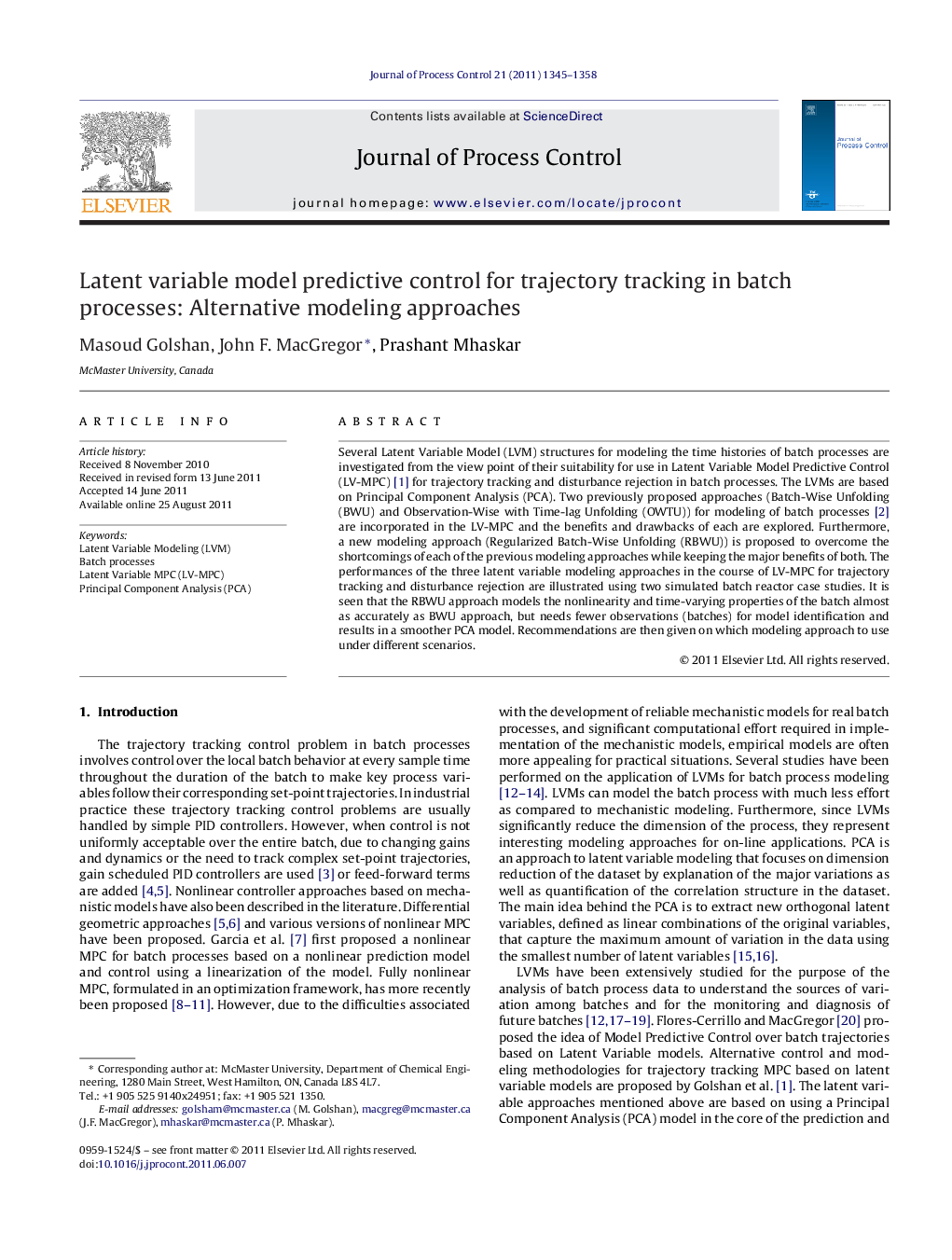| کد مقاله | کد نشریه | سال انتشار | مقاله انگلیسی | نسخه تمام متن |
|---|---|---|---|---|
| 689636 | 889623 | 2011 | 14 صفحه PDF | دانلود رایگان |

Several Latent Variable Model (LVM) structures for modeling the time histories of batch processes are investigated from the view point of their suitability for use in Latent Variable Model Predictive Control (LV-MPC) [1] for trajectory tracking and disturbance rejection in batch processes. The LVMs are based on Principal Component Analysis (PCA). Two previously proposed approaches (Batch-Wise Unfolding (BWU) and Observation-Wise with Time-lag Unfolding (OWTU)) for modeling of batch processes [2] are incorporated in the LV-MPC and the benefits and drawbacks of each are explored. Furthermore, a new modeling approach (Regularized Batch-Wise Unfolding (RBWU)) is proposed to overcome the shortcomings of each of the previous modeling approaches while keeping the major benefits of both. The performances of the three latent variable modeling approaches in the course of LV-MPC for trajectory tracking and disturbance rejection are illustrated using two simulated batch reactor case studies. It is seen that the RBWU approach models the nonlinearity and time-varying properties of the batch almost as accurately as BWU approach, but needs fewer observations (batches) for model identification and results in a smoother PCA model. Recommendations are then given on which modeling approach to use under different scenarios.
► MPC for trajectory tracking of batch processes.
► Different latent variable modeling approaches are presented for batch MPC.
► Advantages and disadvantages of each modeling approach for MPC are discussed.
► Approaches are compared via MPC simulations on two examples.
► New regularized batch-wise unfolding latent variable modeling approach is recommended.
Journal: Journal of Process Control - Volume 21, Issue 9, October 2011, Pages 1345–1358